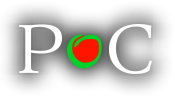 |
 |
|||||||||||||||
|
|
We use an extension of the optical stretcher setup that allows to partially track the laser beams after having passed the cell in the stretcher chamber. We report that the effect of the cells on the beam can, as a first approach, be described by a cell-lens analogy: The cells reduce the divergence of the laser beam or can even refocus the beams. Smaller cells have a higher radius of curvature and are thus stronger lenses; an expectation which we experimentally confirm. Parameters such as cell size and ellipticity are used in a ray-transfer-matrix calculation to predict the expected focussing, making it possible to give an estimate of the refractive index of the individual cell by comparing the expected and the actual measured focussing. This in turn allows to readress the problem of determining the force actually exerted on the cell.
|
|||||||||||||||
|
|
||||||||||||||||
| © 2011 Physics of Cancer | Soft Matter Physics Division, University of Leipzig. Imprint & Disclaimer | ||||||||||||||||
